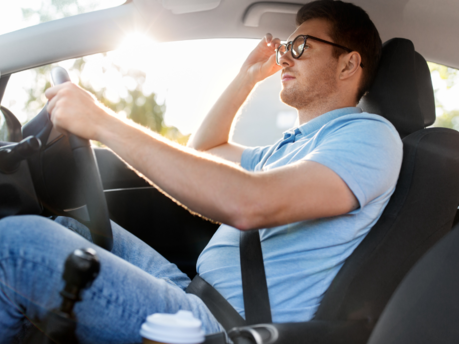Driving a car with poor eyesight: what you need to know
Find out what risks drivers with poor eyesight are taking
According to Statista, around 77% women and 68% of men in the UK reported wearing glasses or contact lenses in 2020 — that’s a lot of people with less-than-perfect eyesight! As with all things motoring, safety comes first, which means being able to see the road, road signs, other road users and any potential hazards clearly and accurately.
Wearing corrective eyewear to bring your eyesight up to the standard of those lucky enough to have 20/20 vision is essential to ensuring that you stay safe if you have poor eyesight. In this article, we’ll be looking at the dangers of driving with poor eyesight, what the sight requirements are for driving in the UK, and what the penalties are for those who drive with less than adequate eyesight.
What constitutes poor eyesight?
The complaints that we can suffer with our eyes are varied. However, the most common eyesight issues are as follows:
1. Age-related macular degeneration (AMD)
As we age, our eyes begin to fail us, and things can become a little fuzzy in our central vision. This is known as age-related macular degeneration, and corrective eyewear can help.
2. Myopia and hyperopia
Heard of long-sightedness and short-sightedness? These are their fancy names! Myopia means that you cannot see things clearly that are in the far distance (short-sightedness), and hyperopia means that you can’t see things that are close up clearly (far-sightedness).
3. Cataracts
Common with age, cataracts are cloudy patches that can develop within the surface of your eyes, and can be removed to restore vision.
What are the dangers of driving with poor eyesight?
1. Compromised hazard perception
Perhaps the most dangerous is the potential to prevent you from seeing hazards in time that poor eyesight can pose. You need to react quickly to the ever-changing landscape of the road ahead and the traffic around you, and not being able to see clearly could lose you vital seconds.
2. Impaired visibility at night
Driving when it’s dark requires an extra level of alertness, and poor eyesight compromises this considerably. Struggling to see hazards and road signs could result in slow and dangerous reactions, not to mention eye strain for you, and oncoming car headlights may dazzle you and result in blurred vision.
3. Inability to see changes in the road surface
As a responsible driver, you should be able to see debris, surface water, black ice and potholes, and driving with poor eyesight and no corrective eyewear could prevent you from doing this.
What are the sight requirements for driving a car in the UK?
According to the DVLA (Driver and Vehicle Licencing Agency), in order to drive a vehicle safely, you must:
- Have an adequate field of vision in which you can see hazards in your peripheral vision
- Be able to read a car registration (from 2001 plates onwards) from 20 metres away
- Possess a visual acuity of at least decimal 0.5 (6/12) on the Snellen Scale (an eye chart that you’ll recognise from your opticians appointment)
The above can be true with the help of corrective eyewear, such as glasses or contact lenses. If you’re unsure as to whether your eyesight is up to the DVLA’s standards, you can ask your optician — they’ll be able to check all of the above.
In fact, we’d recommend that the second you’re unsure about your eyesight in any way, you should book an appointment with an optician to have your eyes tested — you should be getting your eyes tested every two years routinely too.
What is the penalty for driving with eyesight below the legal standard?
If you’re found to be driving with eyesight that is below the legal standard without corrective eyewear to make sure that you meet the standards, you could be facing a fine of up to £1,000 and three points on your licence. In some cases, disqualification could be considered.

